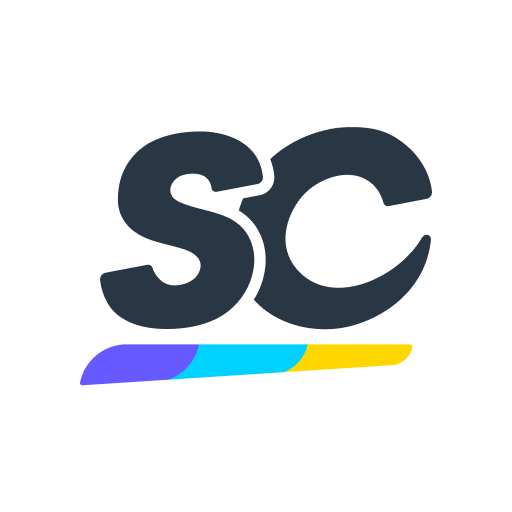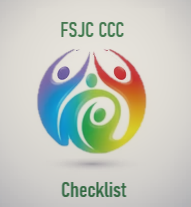Title Page
-
Site conducted
-
Conducted on
-
Inspected By
-
Accompanied By
-
Location
-
Inspection Code:
Y - Yes
N - No
Not Reviewed
Environmental
-
Daily cleaning and sanitation procedures being followed and documented? <br>29 CFR 1910.141; 29 CFR 1926.51; 29 CFR 1928.110; OSHA guidance on Mitigating & prevention of COVID-19 updated 06-10-21
-
General housekeeping is neat and orderly? <br>1910.22, 1926.25
-
Safety bulletin board contains up to date information? <br>1903.2
-
Area free from clutter with materials properly stored safely to prevent fire, tripping or pest hazards <br>29 CFR 1910.22; 29 CFR 1926.25; FSH 6709.11 38.33
-
Clean drinking water provided (from a fountain or with individual drinking cups) and are the containers clean
-
Ventilation adequate to prevent odors?
-
Waste containers kept clean and emptied as needed?
-
Spills cleaned up promptly?
-
Walking/work surfaces free from carpeting damage, holes or cracks (slip/trip/fall hazards)? <br>29 CFR 1910.22(a)(3)
-
Ceilings free from damage or missing tiles? 1910.37(a)(4). NFPA 101 8.5.1
-
Lighting fully functional and in good repair?<br>29 CFR 1910.269
-
Area free from damaged, worn or unsafe messaging?
RESTROOM FACILITIES
-
Are toilets and washing facilities clean and stocked with supplies (soap, towels, toilet paper)?
-
Are fixtures in toilets and washing facilities working and in good repair?
-
Is tilework clean and free from damage?
-
Are showers, sinks and toilets free from leaks?
STORAGE
-
Storage racks tightly assembled and free of sagging from overload or damage?
-
Storage areas kept free of tripping and fire hazards?
-
Materials stored to ensure liquids are kept below paper products?
-
Do employees have a safe way to stock and unstock the shelves?
-
Cleaning supplies properly labeled?
-
Mopping supplies properly cleaned and stored?
-
Materials stored to ensure liquids are kept below/away from paper products?
-
Universal waste stored properly, labeled and dated? 40 CFR part 273; FSH 6709-11 61.18
-
Flammable storage handled properly? (no combustibles or nonflammable items stored in cabinet. No items stored on cabinet. Plugs installed) 29 CFR 1910.106 29; CFR 1926.152 NFPA 30
-
Battery Stored in proper location and meets Safety Requirements? <br>1910.178(g), 1926.441(b)(1)
HAZARDOUS CHEMICALS
-
Eye wash stations serviceable, inspected, not blocked, signposted, tested weekly and signed off? <br>NFPA 101 ANSI Z358.1 Sec5.5.2; CFR 29 1910.132
-
SDS inventory contains all items in the garage/shop and up to date? <br>1910.1200(b)(3)(ii)
-
All hazardous containers labeled appropriately? <br>1910.1200(b)(4)(i)
-
Procedures in place and being followed for obtaining and returning hazardous chemicals?
-
Secondary containers labeled? <br>1910.1200(f)(6)
-
Supplies on hand for incidental chemical spills? <br>1910.12
-
Flammable liquids are in FM/UL metal safety cans? <br>1910.106(a)(29), 1926.155(k), FSH 6709.11 61.51d(2) & (4)( c )
-
Flammable liquids storage containers labeled properly? <br>1910.106(a)(35), FSH 6709.11 61.51d(2) & (4)( c )
-
Personal protective clothing and equipment used (gloves, eye protection, etc.) when handling chemicals?
-
Signage prohibiting eating in areas where hazardous chemicals are present?
-
Oily rags placed in covered metal containers and container labeled? <br>1910.106(a)(9), 1926.252( e )
ELECTRICAL SAFETY
-
Extension cords used only for temporary use with correct voltage and rated for usage? <br>CFR 1910.269
-
Power cords free of splices, taps, and damaged insulation?
-
Electrical parts on tools, equipment, building wiring, and electrical panels enclosed to prevent contact?
-
Circuit overload occurring? If so why?
-
Breaker boxes clear and accessible?
-
Electrical cords and equipment used at wet locations have waterproof covers or seals to keep moisture out?
-
Outlets and covers in good condition with GFCI circuits used in wet locations? <br>CFR 1910.303(b)(1), 1910.304, 1926.404(b)(1), NEC Section 210.52
FIRST AID
-
First aid kit and BBP kit available and stocked using a list of required items? <br>1910.151(b), 1926.50( c ), ANSI/ISEA Z3-8.1, 1926.50(d)(1), PRH Exhibit 5-4
-
EPI Pen available? <br>1910.151 , 1926.50(d)(1), ANSI/ISEA Z3-8.1
-
AED machines inspected with unexpired batteries? <br>1910.151 , 1926.50(d)(1), ANSI/ISEA Z3-8.1
EMERGENCY EVACUATION & EXITS
-
Occupancy loads posted with adequate exit discharge routes that lead outside? <br> 20 CFR 1910.36 (c)
-
Evacuation routes posted in each area with emergency numbers, two-colored coding and are in good repair? <br>29 CFR 1910.38(c)(2), PRH 5.1R17(b)(6)(7)
-
Exits clearly marked and doors that could be mistaken for a way of exit marked “Not an Exit” or with the name of the adjoining room?
-
Exits and exit paths clear and free of obstructions? <br>CFR 29 1910.36, 1910.37, NFPA 101
-
Emergency lighting properly illuminated? 29 CFR 1910.36, 1910.37, NFPA 101
-
Fire alarm panel functioning properly? <br>29 CFR 1910.164(b)(2), NFPA 72, PRH 5.1 R17(3)
-
Exits opened from the inside without a key?
-
Documented emergency evacuation drill within the last 30 days.
TOOLS AND EQUIPMENT
-
JHA’s or safe work procedures in writing and signed for work being performed? <br>1910.132(d)(i), FSH 6709.11-11.12
-
Fall protection equipment stored properly with up-to date inspections? (i.e. harness, lanyards) 29 CFR 1910.140; 29 CFR 1926.501
-
Hand tools serviceable? <br>29 CFR 1910.242 (a); 29 CFR 1926.300(a)
-
Power tools have guards? <br>29 CFR 1910.243; 29 CFR 1926.300 (b) (1); FSH 6709.11 43.51. 6
-
Power tool cords and plugs in good condition? <br>29 CFR 1910.334(a)(1) 1910.334 (a) (2); 1910.334; 1910.334(a092)(ii)
-
Unserviceable broken tools/equipment removed from service? <br>29 CFR 1910.242; 1926.300 (a); FSH 6709-11-43.04. 2
-
Lockout/tagout devices identifiable? 29 CFR 1910.147(c)(5)(ii)(D)
-
Lockouts/tagouts used as needed? <br> PRH-5.1-R28.a-c; 29 CFR 1910.147
MACHINE GUARDING
-
Machinery and equipment serviceable and properly maintained? H&SC 43.12 H&SC 43.51.19
-
Sufficient clearance around machines for safe operations, set up, servicing, material handling, and waste removal? 29 CFR 1910.213(s)(6) H&SC 39.74.5, 7
-
Equipment and machinery securely placed and anchored to prevent tipping or other movement that could result in personal injury? 29 CFR 1910.212(b) H&SC 39.74.4
-
Belts, pulleys, gears, shafts, and moving parts properly guarded? Guards and safety devices functional, adjusted, and in place? 29 CFR 1910.213(a)(9) 29 CFR 1910.219(d) 29 CFR 1910.219(e); H&SC 39.74.6; H&SC 39.74b.3
TOOL SAFETY
-
Engine stands serviceable and Inspected? <br>Manufactures manual
-
Grinders (portable + stationary) have guards in place? Correct gap? <br>1926.303(b)(1)
-
Unsafe hand tools prohibited? <br>1926.301(a)
-
Ladders and stepstools are safe and inspected as appropriate? <br>1910.23(b), 1926.1053, FSH 6709.11 (33.1)
-
Step ladder or commercial stepstool used for high access? <br>1910.23(b), 1926.1053, FSH 6709.11 (33.1)
-
Step ladders used only in open position? <br>1910.23(b), 1926.1053, FSH 6709.11 (33.1)
-
Impact tools, hammers kept free of splinters/mushrooms? <br>1926.301( c ), 1926.301(d)
-
Lifts inspected monthly and documented? <br>ANSI/ALI ALCTV-2011
-
Safety jacks used while working under vehicles? <br>1910.244
-
Brake Lathe inspected and documented? <br>Manufactures Recommendations
-
Tire Changer inspected and documented? <br>Manufactures Recommendations
-
Tire Balancer inspected and documented? <br>Manufactures Recommendations
-
Impact air tools have safety clips or retainers on them? <br>1926.302(b)(2)
-
Portable power tools provided with guarding? <br>1926.302(e)(11)
-
Compressed air used for cleaning limited to 30 psi and ANSI approved tips used? <br>1910.242(b), 1926.302(b)(4)
-
Tool control and accountability log maintained? <br>PRH 5.9 R5(g)
Personal Protective Equipment
-
Noise protection provided for loud work? <br>1910.95(b)(1) 1926.52(a) PRH 5.1 R25(d)(4), PRH 3.3 R10( c )(3), 5.1 R16 ( c ). 5.1 R25(d)(4)
-
Hand protection used/worn as required? <br>1910.138, ANSI 105-2016, PRH 3.3 R10( c )(3), 5.1 R16 ( c )
-
Foot protection worn as required? <br>1910.136(a), ASTM F2413-18, PRH 3.3 R10( c )(3), 5.1 R16 ( c )
-
Fire Alarm Panel ok, no troubles? <br>1910.164(b)(2), NFPA 72, PRH 5.1 R17(3)
-
Protective eyewear use and specified in writing or with signage? <br>1910.145(a)(1), PRH 5.1 R16 ( c ), 1910.132(a), PRH 3.3 R10( c )(3)
Sign Off
-
Name and Signature









